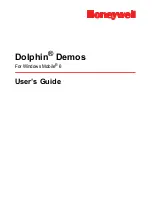
Contents
xviii
Catalyst 3550 Multilayer Switch Software Configuration Guide
78-11194-03
Configuring the Trust State on Ports within the QoS Domain
20-22
Configuring the CoS Value for an Interface
20-24
Configuring the DSCP Trust State on a Port Bordering Another QoS Domain
20-25
Configuring a QoS Policy
20-26
Classifying Traffic by Using ACLs
20-27
Classifying Traffic by Using Class Maps
20-30
Classifying, Policing, and Marking Traffic by Using Policy Maps
20-32
Classifying, Policing, and Marking Traffic by Using Aggregate Policers
20-37
Configuring DSCP Maps
20-39
Configuring the CoS-to-DSCP Map
20-39
Configuring the IP-Precedence-to-DSCP Map
20-40
Configuring the Policed-DSCP Map
20-41
Configuring the DSCP-to-CoS Map
20-42
Configuring the DSCP-to-DSCP-Mutation Map
20-43
Configuring Egress Queues on Gigabit-Capable Ethernet Ports
20-44
Mapping CoS Values to Select Egress Queues
20-45
Configuring the Egress Queue Size Ratios
20-46
Configuring Tail-Drop Threshold Percentages
20-47
Configuring WRED Drop Thresholds Percentages
20-48
Configuring the Egress Expedite Queue
20-50
Allocating Bandwidth among Egress Queues
20-50
Configuring Egress Queues on 10/100 Ethernet Ports
20-51
Mapping CoS Values to Select Egress Queues
20-52
Configuring the Minimum-Reserve Levels
20-53
Configuring the Egress Expedite Queue
20-54
Allocating Bandwidth among Egress Queues
20-54
Displaying QoS Information
20-56
QoS Configuration Examples
20-56
QoS Configuration for the Common Wiring Closet
20-57
QoS Configuration for the Intelligent Wiring Closet
20-58
QoS Configuration for the Distribution Layer
20-59
C H A P T E R
21
Configuring EtherChannel
21-1
Understanding EtherChannel
21-1
Understanding Port-Channel Interfaces
21-2
Understanding the Port Aggregation Protocol
21-3
PAgP Modes
21-4
Physical Learners and Aggregate-Port Learners
21-5
PAgP Interaction with Other Features
21-5
















































